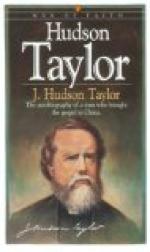A detailed account of this steamer would be a long story, but some of the salient features are as follows: She carries the largest passenger license ever issued, namely: for 5,000 people; on her trial trip she made the fastest record through the water of any inland passenger ship in this country, namely: 23.1 miles per hour. Her shafts are under the main deck. Her mural paintings represent prominent features of the Hudson, which may not be well seen from the steamer. Her equipment far exceeds the requirements of the Government Inspection Laws.
* * *
We hear the murmur of the sea,—
A monotone of sadness,
But not a whisper of the crowd,
Or echo of its madness.
Charles Mackay.
* * *
=The “New York."= The hull of the “New York” was built at Wilmington, Del., by the Harlan & Hollingsworth Co., in 1887, and is, with the exception of the deck-frame, made of iron throughout. During the winter of 1897 she was lengthened 30 feet, and now measures 341 feet in length, breadth over all 74 feet, with a tonnage of 1975 gross tons. The engine was built by the W. & A. Fletcher Co. of New York. It is a standard American beam engine, with a cylinder 75 inches in diameter and 12 feet stroke of piston, and develops 3,850 horse power. Steam steering gear is used. One of the most admirable features of this queen of river steamers is her “feathering” wheels, the use of which not only adds materially to her speed but does away with the jar or tremor common to boats having the ordinary paddle-wheels. The exterior of the “New York” is, as usual, of pine, painted white and relieved with tints and gold. The interior is finished in hard-wood cabinet work, ash being used forward of the shaft on the main deck, and mahogany aft and in the dining-room. Ash is also used in the grand saloons on the promenade deck. One feature of these saloons especially worthy of note, is the number and size of the windows, which are so numerous as to almost form one continuous window. Seated in one of these elegant saloons as in a floating palace of glass, the tourist who prefers to remain inside enjoys equally with those outside the unrivalled scenery through which the steamer is passing. The private parlors on the “New York” are provided with bay windows and are very luxuriantly furnished. In the saloons are paintings by Albert Bierstadt, J. F. Cropsey, Walter Satterlee and David Johnson. The dining-room on the “New York” is located on the main deck, aft; a feature that will commend itself to tourists, since while enjoying their meals they will not be deprived from viewing the noble scenery through which the steamer is passing. While the carrying capacity of the “New York” is 4,500 passengers, license for 2,500 only is applied for, thus guaranteeing ample room for all and the absence from crowding which is so essential to comfort.
* * *
Thy fate and mine are not repose,
And ere another evening close
Thou to thy tides shall turn again
And I to seek the crowd of men.




